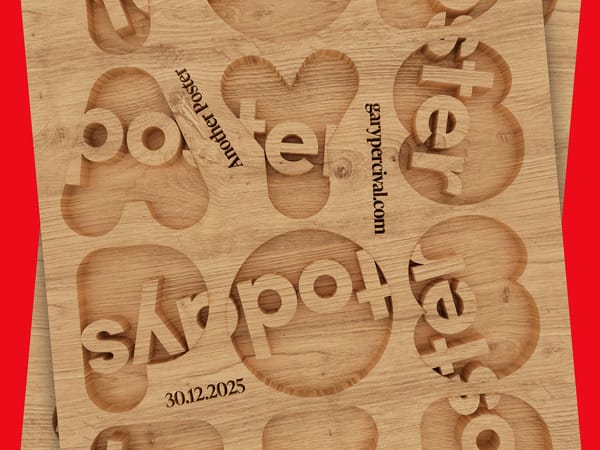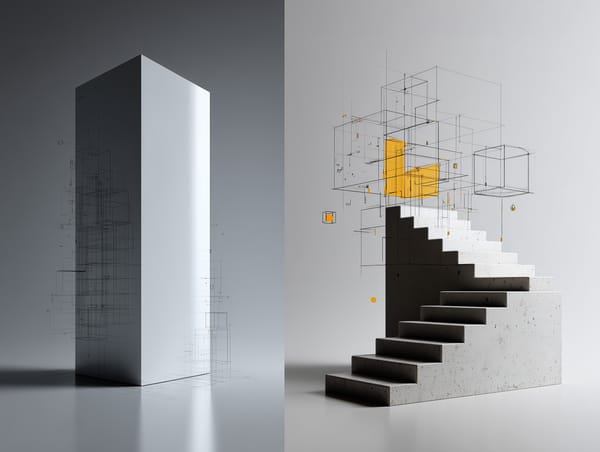Can designers really get more done by working less?
It's no secret that designers are often overworked and struggling to keep up with deadlines.

It's no secret that designers are often overworked and struggling to keep up with deadlines.
But is it really possible to get more done by working less? According to some experts, the answer is yes. By learning to value your time and take breaks effectively, you can actually increase your productivity and make the most of your design work.
In this article, we'll explore ways that you can work smarter, not harder, and get more done in less time.
So read on to find out how you can make the most of your design career!
The myth of the overworked designer
For many graphic designers, the thought of working less seems like an impossible dream. They often feel like they have to work long hours to be productive and meet deadlines. But new research suggests that this may not be the case.
Freelance graphic designers often find that they are most productive when they set limits on their workday and stick to them. This means working fewer hours, but also taking breaks during the day to refresh and recharge.
When they do this, they find that they are able to get more done in less time and produce better quality work.
How to be more efficient with your time
There are a few things freelance graphic designers can do to be more productive in less time. One is to break up their workday into short blocks of time, with breaks in between.
This will assist them in remaining focused and avoiding burnout. They can also use tools like Pomodoro timers to help them stay on track.
Additionally, they should make sure they are well-rested and have a good workspace that is conducive to productivity.
When they follow these tips, they will find that they are able to get more done in less time.

How to find your ideal work-life balance
Finding the right work-life balance can be difficult, but it is essential for freelancers. It is important to find a balance that works for you and allows you to be productive and happy.
Some tips for finding this balance include:
- Setting and adhering to specific work hours
- Taking breaks during the day to relax and recharge
- Limiting the amount of work you do each day
- Working on different projects at different times of the day
Finding the right work-life balance takes time and experimentation, but it is worth it in order to be productive and happy.
Freelancers who find the right balance often find that they are able to get more done in less time and produce better quality work.
So, if you're struggling to find a balance that works for you, don't be afraid to experiment until you find what works best.
Working smarter, not harder
Ultimately, the key to being productive as a freelance graphic designer is to work smarter, not harder. This means finding ways to be more efficient with your time and using technology to your advantage.
There are a number of apps and tools available that can help designers be more productive. By using these tools, designers can save time and energy, which can be put towards creating better design work.
Tips for working smarter, not harder
Working less can indeed make you more productive, but it’s not the only thing you can do to be more efficient with your time.
Here are some tips for working smarter, not harder:
- Set limits on your workday and stick to them. This means working fewer hours but also taking breaks during the day to refresh and recharge.
- Take care of yourself, both physically and mentally. Make sure you get enough sleep, eat healthy foods, and take breaks during the day to move around and stretch.
- Use tools and resources that can help you be more efficient with your time. There are many tools out there that can help you save time and be more productive, such as project management software, online templates, and stock photo libraries.
- Delegate tasks whenever possible. If you can delegate tasks to others, whether it’s fellow freelancers or virtual assistants, you can free up more of your own time to focus on the things you can only do.
- Stay organised and keep your work environment clean and clutter-free. This will assist you in remaining focused and avoiding distractions.
By following these tips, you can work smarter and be more productive with your time. Remember, working less doesn’t mean you have to produce less.
In fact, you may find that you can get more done in less time by working smarter, not harder.

Tools and techniques for streamlining your workflow
Working less may help you be more productive, but it's not the only thing that can help you streamline your workflow.
Here are some tips and tools that can help you work more efficiently:
- Use a task management tool like Asana or Trello to keep track of what you need to do and track your progress.
- Make use of keyboard shortcuts to quickly perform common tasks.
- Invest in quality design software and hardware that will save you time and help you produce better work.
- Stay organised by keeping your files and folders organised in a way that makes sense to you.
- Take advantage of cloud storage and collaboration tools to make it easy to access and share your work with others.
- Automate as much of your workflow as possible using tools like Photoshop actions or Sketch plugins.
By following these tips, you can start to streamline your workflow and get more done in less time. So, if you're looking to be more productive as a freelance graphic designer, don't forget to try working less!
The benefits of taking breaks throughout the day
Working long hours doesn't always lead to more productivity. In fact, taking breaks throughout the day can actually help you get more done.
The following are some of the advantages of taking breaks:
- Breaks allow your brain to rest and rejuvenate.
- Breaks allow you to remain focused and motivated.
- Taking breaks can help you boost your creativity and problem-solving abilities.
- Breaks allow you to stand back and assess your work.
- Take breaks to be healthy and energised.
So, go ahead and unwind! Your work will appreciate it.
Setting realistic goals and expectations for yourself
Setting realistic goals and expectations for yourself as a freelance graphic designer is essential to your success. When you're realistic about what you can accomplish in a day, week, or month, you're less likely to feel overwhelmed or stressed out.
Additionally, by setting reasonable goals for yourself, you'll be able to impress potential clients with your productivity and reliability.
So, how can you set realistic goals as a freelance graphic designer?
First, take into account the other commitments in your life, such as your job, family, and social obligations. Then, consider the amount of time you realistically have to work on design projects.
Once you have a good understanding of the time you have available to work, you can start setting goals.
Setting boundaries with clients and colleagues
Designers are often overworked, juggling multiple projects at the same time. While it may seem like working longer hours will get more done, in reality, it can actually have the opposite effect.
In order to be productive and efficient, designers need to set boundaries with clients and colleagues. This means learning to say no when necessary and sticking to deadlines. It can be difficult to do, but ultimately, it will help to improve the quality of your work.
So, can designers really get more done by working less? It depends. If you're able to set boundaries and manage your time effectively, then working fewer hours can actually help you be more productive.
However, if you're constantly taking on new projects and working long hours, it's likely that you'll eventually burn out. In either case, it's important to find a balance that works for you and your career.
In conclusion, working smarter, not harder is definitely a viable option for designers. By taking advantage of some or all of the strategies mentioned in this article, you can get more done in less time and increase your productivity.
I hope you’ll try out at least one of these techniques and see how it works for you. And if you want more tips like this, sign up for my newsletter where I share more content on productivity and design.



